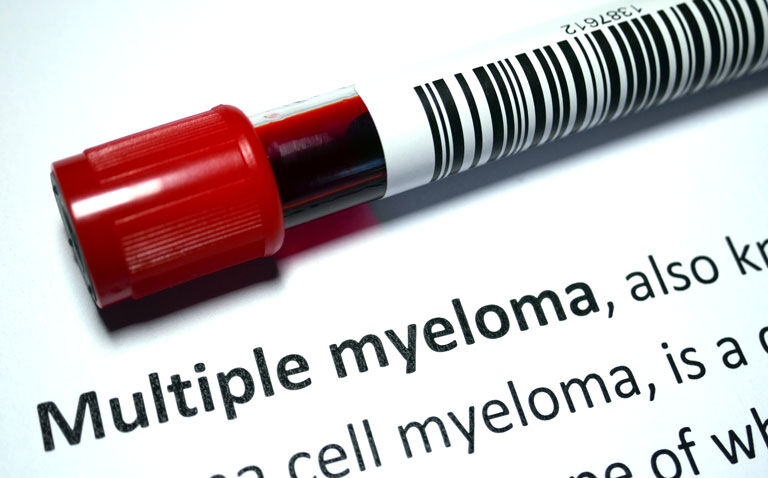Selinexor triple therapy with bortezomib and dexamethasone, provides a clinically meaningful improvement in overall survival in lenalidomide-refractory patients with multiple myeloma, according to a study presented at the 2023 European Haematology Association (EHA) Congress.
Among newly diagnosed adults with multiple myeloma, first-line treatment options is lenalidomide. One potential treatment option if patients become lenalidomide-refractory is the use of selinexor. The drug is a potent, orally administered exportin 1 inhibitor, the action of which blocks nuclear export of tumour suppressor, growth regulatory and anti-inflammatory proteins. This leads to accumulation of these proteins in the nucleus, enhancing their anti-cancer activity in the cell.
The BOSTON trial in 2020 demonstrated how selinexor triple therapy (with bortezomib, and dexamethasone) was effective in patients with multiple myeloma who had received one to three previous lines of therapy.
For the study presented at the EHA Congress 2023, researchers undertook a subgroup analysis of data from the BOSTON trial. They focused on the impact being lenalidomide-refractory and how this affected the effectiveness and safety of either selinexor triple therapy (SVd) – comprising selinexor 100 mg, bortezomib and dexamethasone – or standard therapy (Vd) of bortezomib and dexamethasone only. The outcomes of interest were both progression-free survival (PFS) and overall survival (OS), but researchers also examined the objective response rate (ORR) and the very good partial response (VGPR).
Selinexor triple therapy and treatment outcomes
Among a total of 402 patients, 106 were classified as lenalidomide-refractory and equally distributed between the two therapy arms, with 53 in each.
The median PFS was significantly longer for the SVd group (10.2 vs 7.1 months, hazard ratio, HR = 0.52, 95% CI 0.31 – 0.88, p = 0.012). In addition, the median OS was also statistically significant, representing clinically meaningful improvement for the SVd group (HR = 0.53, 95% CI 0.30 – 0.95, p = 0.03).
Patients assigned to selinexor also had a higher ORR (67.9% vs 47.2%) and a higher VGPR or better (35.8% vs 24.5%).
The most common treatment-emergent adverse events, defined as affecting more than a quarter of patients, with SVd and Vd, were thrombocytopenia (71.7% vs 40.4%), nausea (50.9% vs 11.5%), fatigue (45.3% vs 21.1%), diarrhoea (43.4% vs 19.2%), anaemia (39.6% vs 25.0%), and peripheral neuropathy (30.2% vs 38.5%).
Commenting on these findings at EHA, the presenting author, Professor Maria-Victoria Mateos said ‘The data presented emphasise the synergy between selinexor and bortezomib, highlighting the importance of a double mode of action switch. These results are particularly relevant considering the increased use of the daratumumab lenalidomide dexamethasone combination in clinical practice today,
‘These findings further support the use of selinexor in combination with bortezomib in proteasome inhibitor/bortezomib-naïve or lenalidomide-refractory relapsed refractory multiple myeloma patients, as well as for patients at first relapse.’










